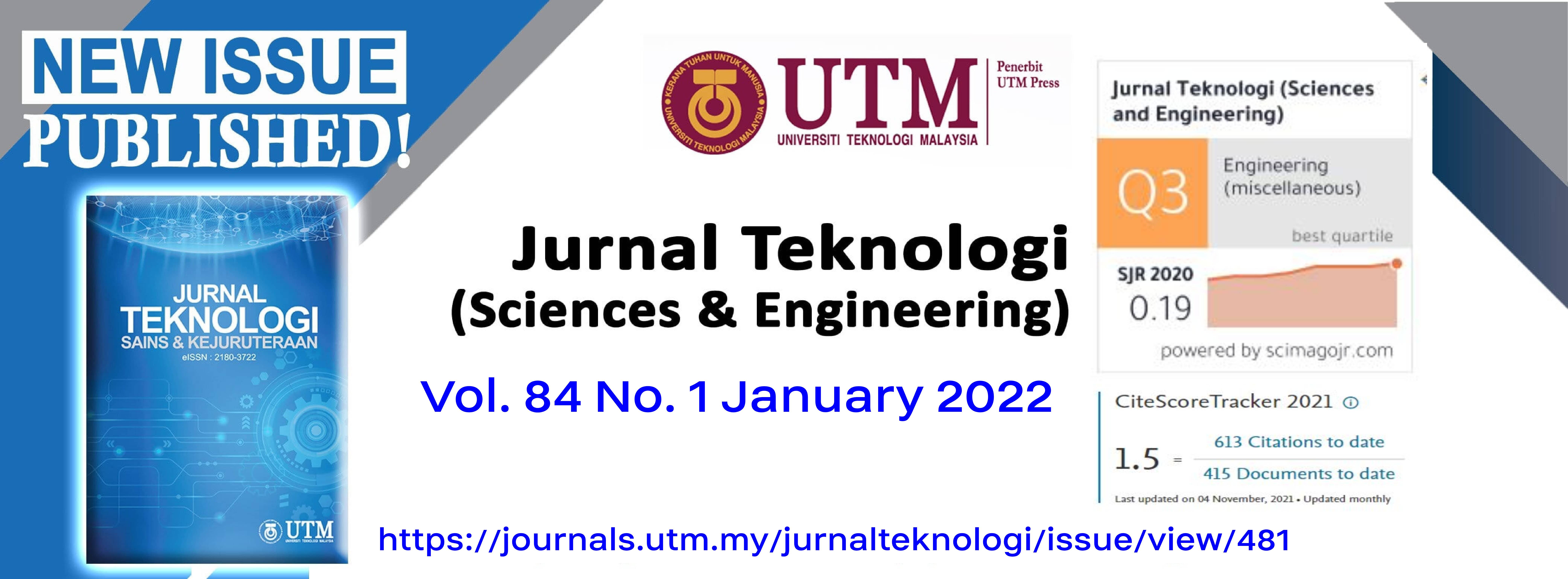PREDICTIVE MODELING OF MIXED HALIDE PEROVSKITE CELL USING HYBRID L27 OA TAGUCHI-BASED GA-MLR-GA APPROACH
DOI:
https://doi.org/10.11113/jurnalteknologi.v84.15550Keywords:
FF, genetic algorithm, PCE, Photovoltaic, Taguchi based GRAAbstract
Perovskite photovoltaic cell is regarded as an alternative configuration for the conventional photovoltaic cells predominantly due to its high efficiency. In this paper, a predictive modeling using a hybrid L27 orthogonal array (OA) Taguchi-based Grey relational analysis (GRA), multiple linear regression (MLR) and genetic algorithm (GA) was proposed to optimize the device parameters for better overall performance. The Perovskite photovoltaic cell model is initially constructed and simulated using solar cell capacitance simulator (SCAPS). The final results reveal that the proposed hybrid L27 OA Taguchi-based GRA-MLR-GA approach has effectively optimized the device parameters in which SnO2:F thickness, SnO2:F donor density, ZnO thickness, ZnO donor density, CH3NH3PbI3-xClx thickness, CH3NH3PbI3-xClx donor density, Spiro-OMeTAD thickness and Spiro-OMeTAD acceptor density are predictively tuned at 0.198 μm, 8.973 x 1018 cm-3, 0.039 μm, 8.827 x 1017 cm-3, 0.386 μm, 1.929 x 1013 cm-3, 0.233 μm and 8.984 x 1018 cm-3 respectively. After the predictive modeling, both FF and PCE of the perovskite photovoltaic cell have been improved for ~5.93% and ~5.78% respectively.
Downloads
Published
Issue
Section
License
Copyright of articles that appear in Jurnal Teknologi belongs exclusively to Penerbit Universiti Teknologi Malaysia (Penerbit UTM Press). This copyright covers the rights to reproduce the article, including reprints, electronic reproductions, or any other reproductions of similar nature.
















